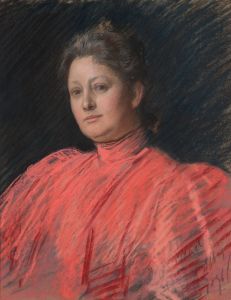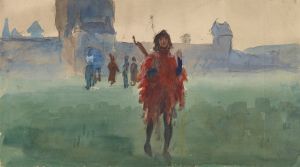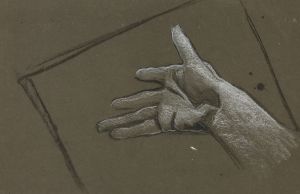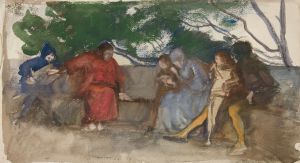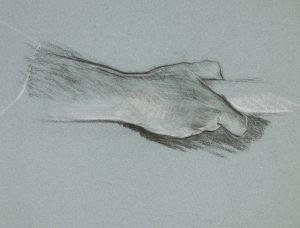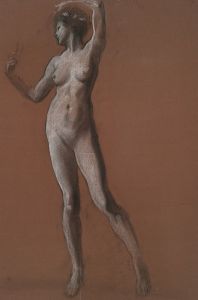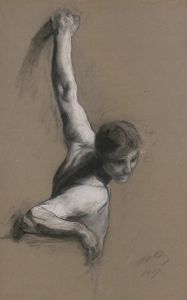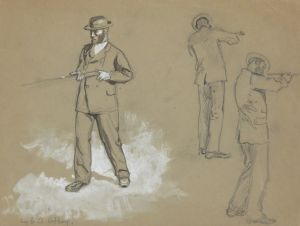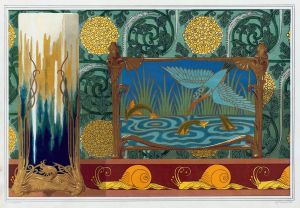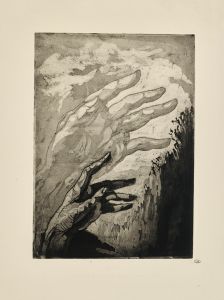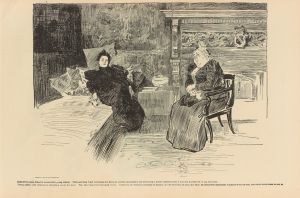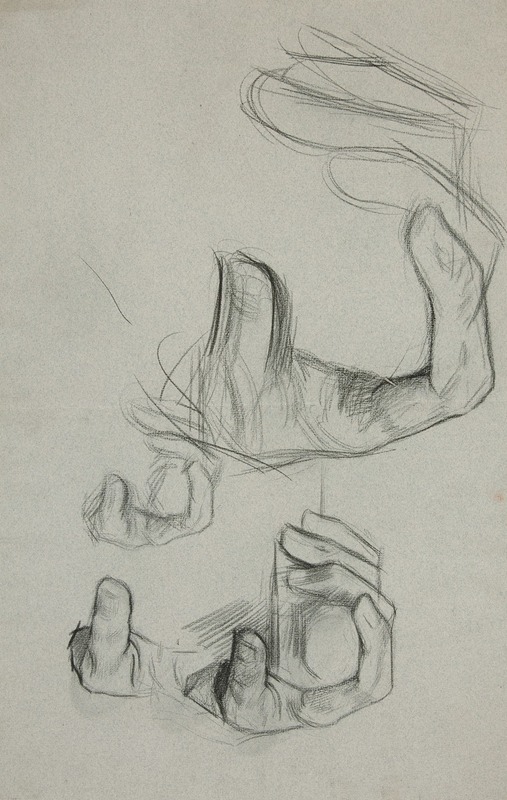
Sketch of hand clasping a cane
A hand-painted replica of Edwin Austin Abbey’s masterpiece Sketch of hand clasping a cane, meticulously crafted by professional artists to capture the true essence of the original. Each piece is created with museum-quality canvas and rare mineral pigments, carefully painted by experienced artists with delicate brushstrokes and rich, layered colors to perfectly recreate the texture of the original artwork. Unlike machine-printed reproductions, this hand-painted version brings the painting to life, infused with the artist’s emotions and skill in every stroke. Whether for personal collection or home decoration, it instantly elevates the artistic atmosphere of any space.
Edwin Austin Abbey (1852–1911) was an American artist and illustrator known for his detailed pen-and-ink illustrations and later for his large-scale mural work. Among his many works, Sketch of Hand Clasping a Cane is a lesser-known piece that reflects his skill in capturing intricate details and human anatomy.
This sketch is a study of a hand gripping a cane, showcasing Abbey's ability to render lifelike textures and forms with precision. The drawing demonstrates his keen observation of the human figure, particularly the anatomy of the hand, and his mastery of light and shadow to create depth and realism. The piece is executed in a monochromatic medium, likely graphite or ink, which was a common choice for his preparatory studies and illustrations.
Abbey's career began as an illustrator for magazines such as Harper's Weekly, where he gained recognition for his depictions of literary and historical subjects. His work often drew inspiration from Shakespearean plays, English history, and medieval themes. While Sketch of Hand Clasping a Cane does not directly reference a specific literary or historical context, it is consistent with Abbey's practice of creating detailed studies as part of his artistic process. Such sketches were often preparatory works for larger compositions or standalone exercises in draftsmanship.
The exact date of this sketch is not documented, but it likely originates from the late 19th or early 20th century, during Abbey's active years as an artist. The purpose of the sketch is also not explicitly recorded, but it may have been intended as a study for a larger project or simply as an exploration of form and technique.
Abbey spent much of his career in England, where he was influenced by the Pre-Raphaelite movement and the traditions of European art. His attention to detail and historical accuracy in his works earned him widespread acclaim. In addition to his illustrations, Abbey is remembered for his murals, including the series in the Pennsylvania State Capitol and the Boston Public Library.
While Sketch of Hand Clasping a Cane is not among Abbey's most famous works, it serves as an example of his dedication to the fundamentals of art and his meticulous approach to drawing. The piece is a testament to his skill as a draftsman and his ability to convey the subtleties of the human form.
Further details about the provenance or current location of this sketch are not readily available.





